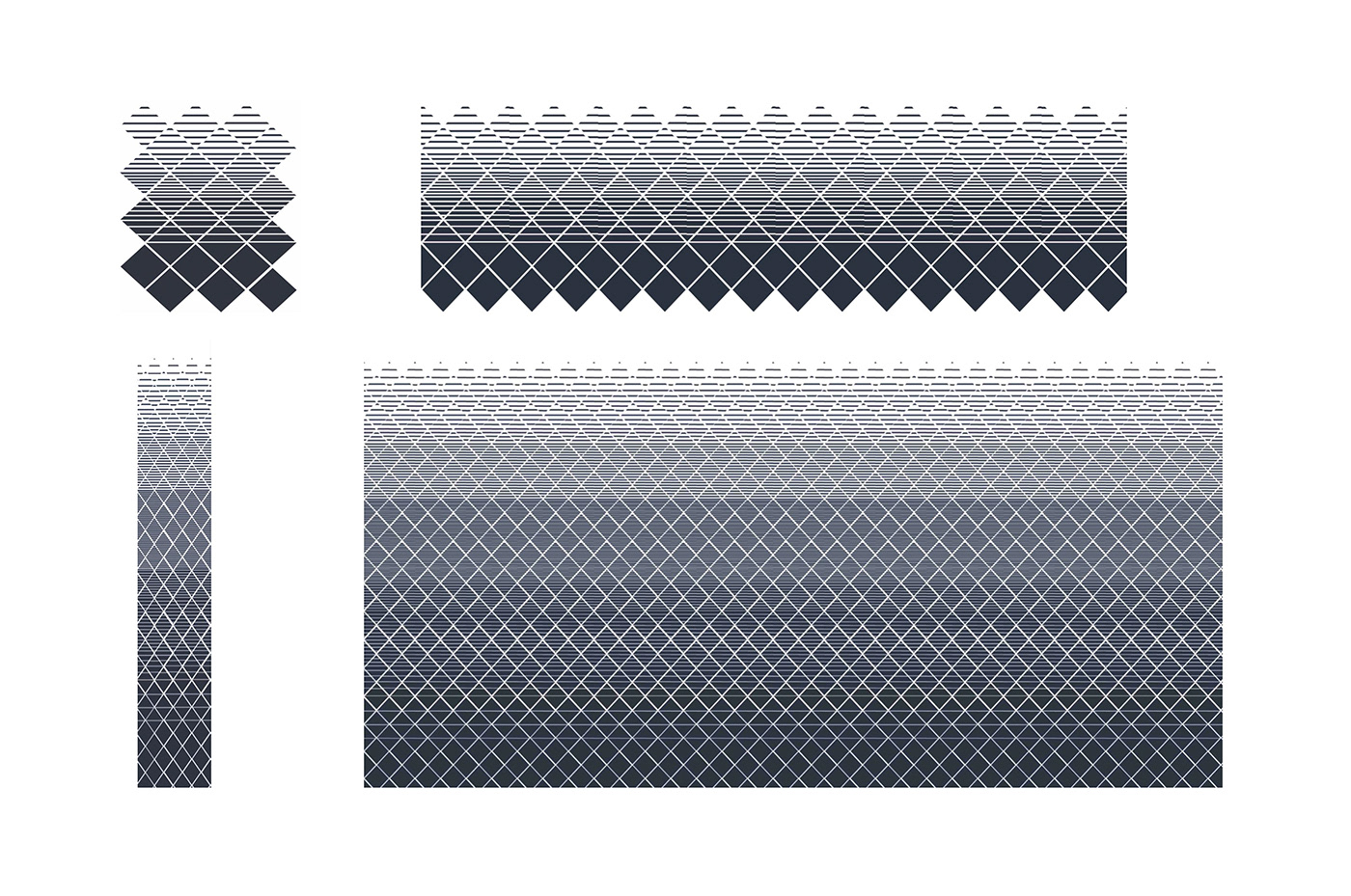
As a student, I was always interested in the vast heritage of Indian handloom textiles, particularly silk weaving. I wanted to further develop an understanding of how these beautiful textiles are produced, and what are the possibilities of further explorations, all the while engaging with the craftspeople. So when I was presented with the opportunity of graduation project, I chose to work with the handloom brand Tilfi Banaras.


Brand persona
The brand largely caters to the Indian audience and Indian diaspora across the world, mostly women of the age group ranging from thirty five and older, who appreciates Banarasi craftsmanship, heritage and the finesse of the product.

Various processes and artisans involved in making a handloom product
Top (left to right) : graph-making, setting up the warp, weaving
Bottom (left to right) : card-punching, filling up the bobbins, weaving of a Rangkaat sari
The weaving tradition of Banaras is as old as the city itself and Banaras is considered as the hub of silk-weaving in India. Weavers (bunkar/karigar) are the backbone of Banarasi weaving industry, it’s their impeccable design and skill, that has given Banarasi its attributed timeless-ness. Most of the weavers are from the Muslim community and belong to families that have been practicing since generations, weaving is literally in their bones.
Besides the weavers, there are many other artisans who are involved in various processes starting from procuring the raw materials (mulberry silk, zari and more), to preparing the design and the warp (dyeing, setting up the warp and the loom, card-punching, graph-making and more); to all the way to weaving and finishing the product. The Banarasi weaving ecosystem involves various artisans, a variety of skillset and knowledge at every stage, to craft each product to perfection.
After understanding the craft, brand ethos and aesthetics, and looking at all the collections made so far, me and my mentor arrived at the design brief for the first collection.
Project Brief :
To come up with two innovative design collections that are different from the traditional Banarasi saris. Each collection comprising of at least 5 - 6 distinct designs and 10 -12 pieces, including the colour ways.
Collection 1:
The first collection will be moderately priced saris for the modern women, who are looking for a sari which is simple yet classy; suitable for smaller events, such as office parties, meetings, school or college events and more; but at the same time captures the elegance of a Banarasi sari. A collection which is contemporary with an engaging visual language, to be released around winters.

Images : 1. Top - Cassiopee II, Victor Vasarely, 1958, 2. Bottom - Bora III, Victor Vasarely, 1964
Design Inspiration for Collection 1 - Optical Art

Works of one of the most influential artists of Op Art movement, Bridget Riley
Images : (Top, left to right) 1. Orient 4,1970, 2. Untitled, 1971, 3. Tremor, 1961
(Bottom, left to right) 1. Cataract 3,1967, 2. Descending,1965, 3. Study for Movement in Squares (1961)

Colour palette for this collection
Based on the inspiration, season and the colours which are popular amongst customers, we decided on the above colour palette for this collection. Also based on the season, the fabrics decided for this collection were katan silk (plain-woven mulberry silk) and 5-end satin silk.


More explorations and iterations

Design element in repeat
Taking forward one of the interesting exploration, I set it in repeat which gave an idea regarding where the element can be aptly used in the sari. For this design element, using it in the borders would create an interesting visual. Thus the next step was to create a layout of the sari to get a better understanding of placement possibilities, scale and entire look of the product.

Layout of the first sari
In this sari I decided to make the top border 4 inches wide in silver zari and bottom border 8 inches wide, with 10 inches wide end-piece, simply comprising of evenly-placed silver lines which keeps the focus on the borders ; the black selvedges add more definition to the whole piece. The sari is made using katan silk (plain weave, mulberry silk) and borders in silver zari woven in kadhwa technique of Banarasi.
Once the layout is finalised, a fabric sample is woven by the weaver, if all the details work in the sample, then it is approved and final sari is produced. Given below are the images of the final sari of this design.

Final sari

Colour-ways
Following the above mentioned design process, I created more designs, out of which four more were finalised and produced; images of which are given below.

Satin sari with silk and silver zari border and pallu; the stripes in body are woven using tanchoi technique of Banarasi

Colour-ways

Satin silk sari, with gold and silver zari border & pallu ; pattern on body of the sari is woven using tanchoi technique

Colour-ways and details

Satin silk sari with silver zari border and pallu ; woven using tanchoi technique

Colour-ways and detail images

Katan silk (plain woven mulberry silk) sari with silver zari butis (motifs), borders and pallu ; made using kadhwa technique of Banarasi

Colour way and detail images

Colour way and detail images

Project Guide : Shafiq Afzal
Project Mentor : Ujjwal Khanna
Images credit : Team Tilfi Banaras
Stitched garments : Siddharth Pandey
Big thanks to all the weavers, graph-makers and artisans for their inputs and translating the designs beautifully on to fabric.
All the designs, photographs and other contents of this project are property of Tilfi Banaras, National Institute of Design, Ahmedabad and the publisher. Use of any content for any purpose, without permission of the owners is prohibited.




